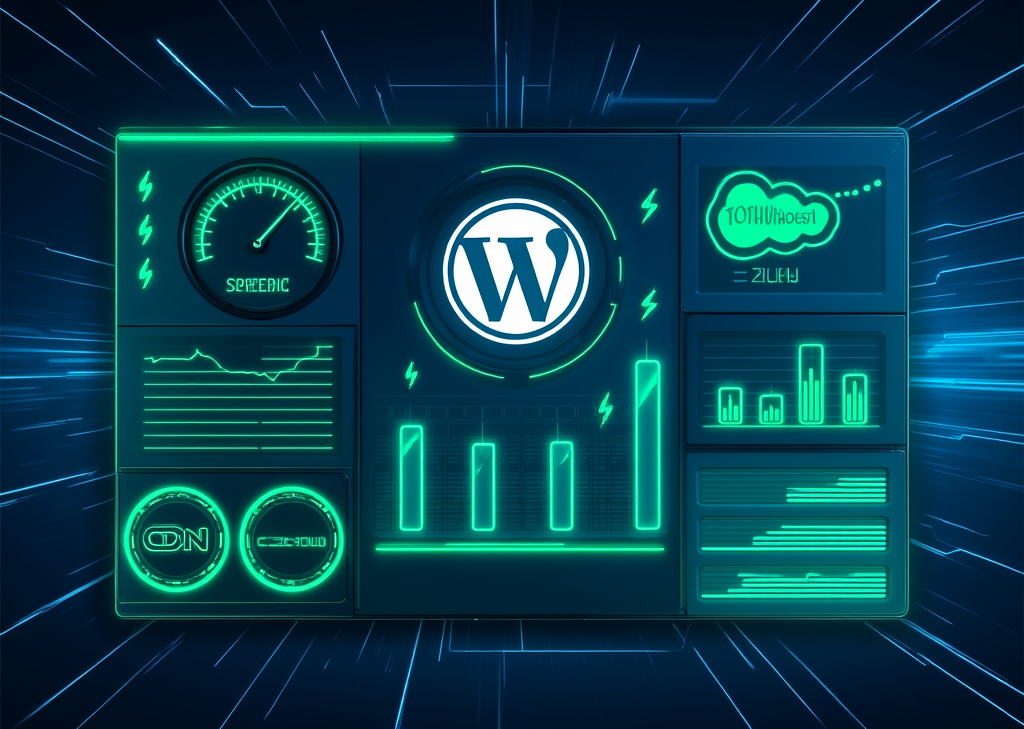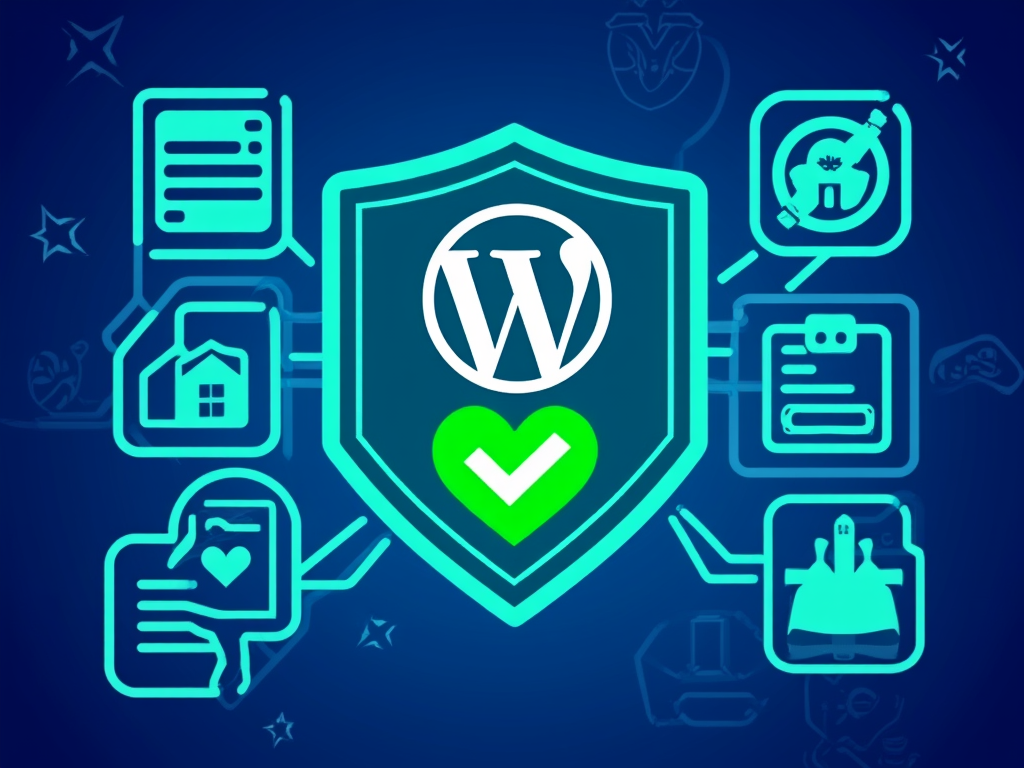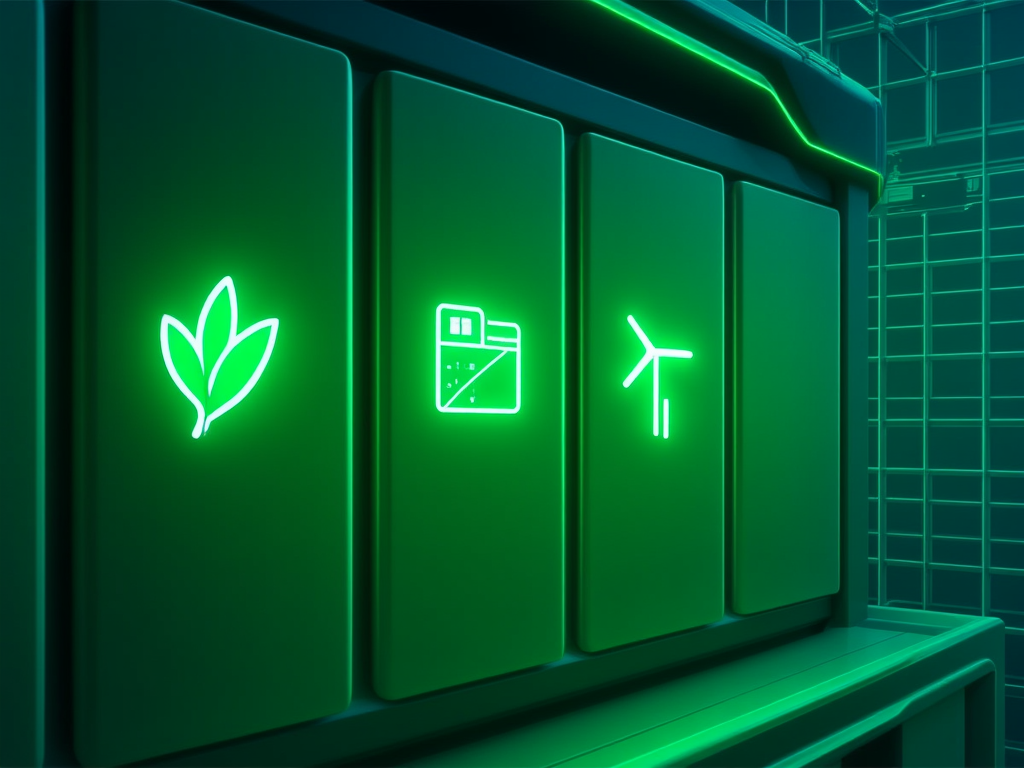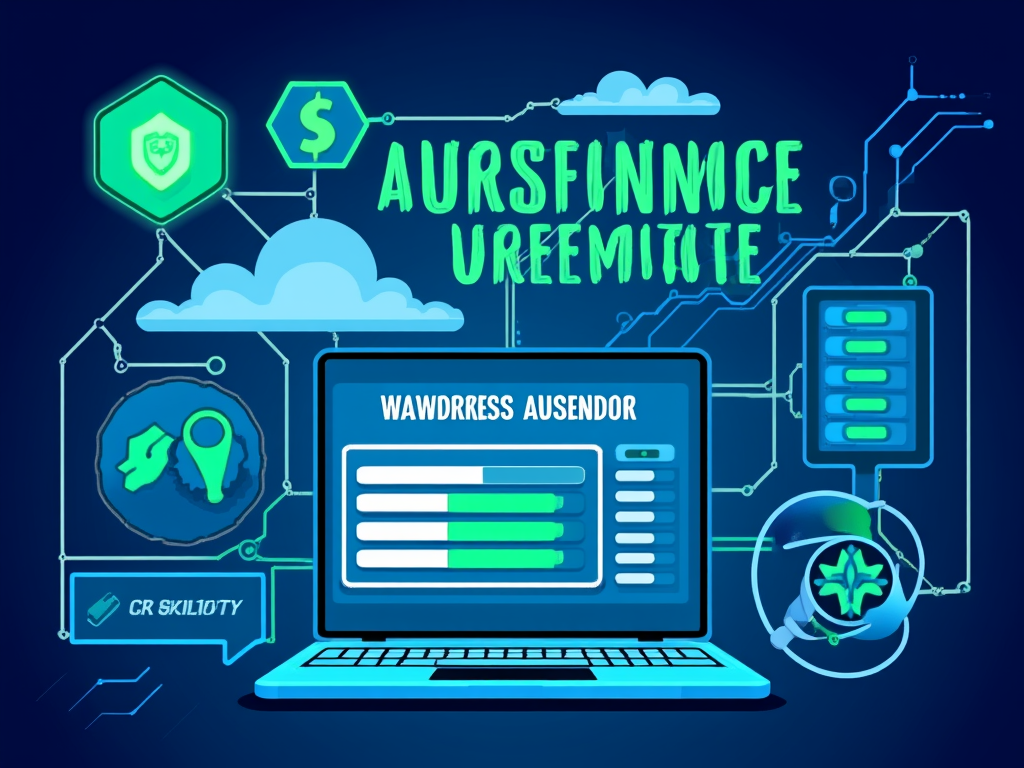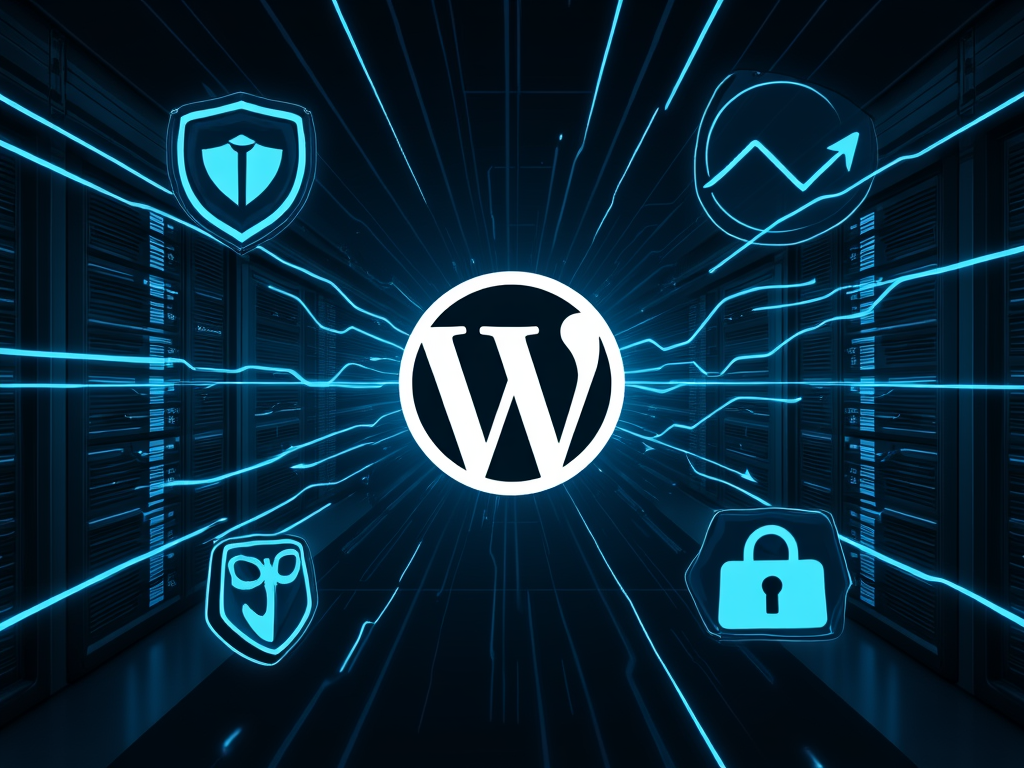<h1>WordPress usage: tips for faster sites</h1>
<h2>Introduction</h2>
In today’s digital landscape, every second counts. The moment you click on a link, expectations soar—will the page load in the blink of an eye, or will you be left staring at an endless spinning wheel? For WordPress site owners, the urgency is tangible. A slow-loading site means lost visitors, abandoned carts, and diminished search engine visibility. The reality is clear: mastering **WordPress speed optimization** isn’t just an option; it’s a necessity.
Imagine you’re running an online store, and a potential customer clicks through, ready to buy. But instead of a quick product showcase, they confront a sluggish slideshow of images. Frustration mounts—they leave, perhaps never to return. Now, consider if your site had engaged them instantly. Implementing effective **WordPress performance optimization techniques** can transform that narrative not just for you, but for every user that lands on your site.
<h2>Understanding Site Speed and User Expectations</h2>
Site speed plays a pivotal role in user experience. Research shows that a mere one-second delay can lead to a 7% reduction in conversions. Can you afford that? The balance between a visually stunning website and efficient functionality can often feel precarious. But with the right strategies, it's possible to achieve both.
When users encounter a website too slow to respond, it’s not just disappointment they feel; it's distrust. A slow site can lead visitors to think your entire operation is unprofessional, damaged, or unreliable, prompting them to opt for the competition. Thus, your goal isn't simply to increase speed—it's about building and maintaining trust.
<h2>Theme Selection and Optimization</h2>
Your choice of theme lays the groundwork for your website’s performance. Selecting a **lightweight theme** is like choosing a well-brewed cup of coffee over a subpar blend—one wakes you up efficiently while the other leaves you groggy. A good theme should be sleek, focusing on essential elements without imposing heavy CSS or JavaScript files that could slow you down.
But perhaps you've already found the perfect theme, only to discover it’s not as efficient as it seems? Don’t despair. You can optimize existing themes by disabling unnecessary features. It’s akin to tidying up your workspace; simply getting rid of clutter can lead to a cleaner, more productive environment. **Minification** can also be a game changer, removing extraneous characters from your CSS and JavaScript, thus speeding up load times—a handy trick akin to vacuum-sealing your favorite snacks.
<h2>Plugin Management and Optimization</h2>
Let’s talk plugins. Every added functionality comes at a cost, often in the form of performance hits. Think of plugins as weights strapped to your site: each one could weigh you down, resulting in a slower experience for your users. To streamline your operations, start by evaluating your current plugins. Do you really need that plugin for social sharing, or can a simple link suffice?
Aim to minimize your plugins from the outset. Stick to reputable, high-performing plugins and consider those that combine multiple functionalities, thus reducing the total count. Always keep them updated—like new batteries in a remote, outdated plugins can leave you fumbling for controls.
<h2>The Power of Caching</h2>
Imagine a library where every time you wanted a book, the librarian had to retrieve it from the archive. This would take ages! **Caching** serves to cut this time down significantly. It creates a snapshot of your page and serves it to repeat visitors, bypassing the heavy lifting of computing everything from scratch each time.
There are three main types of caching that WordPress can harness:
- **Browser caching** stores files on the user's device, speeding up subsequent visits.
- **Server-side caching** allows your server to deliver up frequently accessed content rapidly.
- **Object caching** efficiently reuses data from databases, reducing server requests.
Many WordPress hosting providers offer built-in caching solutions. For personal tweaks, consider plugins that line up with your goals, enhancing page delivery and ultimately elevating the user experience.
<h2>Image Optimization and Lazy Loading</h2>
Digging into assets, images usually hog the largest chunks of the pie. An unoptimized image can weigh down your page significantly, affecting load time. It’s vital to adopt **image optimization** strategies—compressing images without sacrificing quality, defining appropriate dimensions in HTML, and utilizing the right formats for each scenario (like JPEGs for photos or PNGs for transparent backgrounds).
Enter **lazy loading**, a compelling approach that postpones loading images until they become visible in the user's viewport. Picture this like a theater curtain that doesn’t rise until the scene is ready. Initially, this reduces the load on your server while speeding up visible content presentation—all while giving users a snappier experience.
<h2>Database and Server Optimization</h2>
Underneath the user-friendly interface, a WordPress site is a delicate dance of databases playing the lead. Each page request pulls data from multiple tables, and if your database gets cluttered, expect at least a minor stumble. Regular **database optimization** is essential to keep your dance smooth. Clean up redundant data and leverage plugins like WP-Optimize to automate this process.
You also need to consider external HTTP requests feeding into your site. Limit these requests—it’s like opting for a direct flight instead of connecting through multiple airports. Each script or font from another site requires a handshake, which slows down overall performance.
One effective measure is reducing font calls. A maximal two web font families can streamline requests, while utilizing `font-display: swap` prevents users from experiencing the dreaded flash of invisible text. Such small adjustments can yield profound effects.
<h2>Content Delivery Networks (CDNs)</h2>
If your audience is spread across continents, a **Content Delivery Network (CDN)** is one of your best allies. A CDN works by caching your content in multiple locations around the world, ensuring that users from various regions access your site through their nearest point of presence, drastically cutting load times.
Enabling a CDN is like deploying an army of delivery ninjas—swift and efficient. Not only does this minimize latency, but it also decreases the workload on your primary server, allowing it to focus on other critical tasks.
<h2>Advanced Optimization Techniques</h2>
As we delve deeper, we come to advanced optimization techniques that might require a bit more technical know-how but can produce exceptional results. It’s no secret that render-blocking JavaScript and CSS can wreak havoc on speed. Tackling these with methods such as **defer** and **async** can transform your page load experience.
Minifying your scripts and styles will clear out space, while techniques like **tree shaking** can help you eliminate unused JS code entirely—like cleaning out your closet and keeping only the essentials.
Optimizing your server response time is another key strategy for delivering lightning-fast content. Tweaks on how you cache and serve your HTML can potentially shave seconds off your loading processes.
With all these strategies and technologies at your disposal, the path to a faster WordPress site is beckoning. Opportunities for improvement abound, from image optimization to database efficiency. Your website deserves to shine brightly without the shadows of sluggish speeds casting doubt over user satisfaction and conversion rates.
<h2>Performance Measurement and Monitoring</h2>
To turn these strategies into successes, establishing clear performance metrics is non-negotiable. Tools like GTmetrix allow you to analyze loading times and pinpoint bottlenecks, ensuring your optimizations yield tangible improvements. Monitoring will keep your management light; proactive adjustments will help your website flourish over time, just like a garden needing occasional pruning.
---
BEST OFFERS:
Do you want to create your own company website or create your own online business on the Internet?
– WEB HOSTING
– DOMAIN REGISTRATION
– WEB DEVELOPMENT
– SITE BUILDER



“`html
Prioritizing Optimization Techniques
As you dive deeper into optimizing your WordPress site, it’s beneficial to adopt a structured approach. Begin with high-impact, low-effort optimizations—these are your quick wins. Enabling caching, optimizing images, and trimming down on unnecessary plugins are steps that can yield noticeable improvements almost immediately.
Next, hone in on your database’s health and the resource-heavy scripts that may be dragging down your site. As you implement each enhancement, take time to assess their effects on performance. It’s crucial to measure the impact of each change you make, ensuring that your efforts are leading to improved speeds and better user experiences.
Measuring and Monitoring Performance Over Time
Having set performance goals, equipping yourself with the right tools is essential. Leverage services like GTmetrix, which can offer comprehensive insights into your site’s loading times and performance metrics. With the data provided, you can visualize how your optimizations pay off and identify new bottlenecks as they arise.
Incorporate performance monitoring regularly to track ongoing improvements. Scheduling audits to gauge speed across different times or seasons can provide nuanced insights into how your visitors experience the site. Many hosting providers have integrated performance auditing systems that tailor reports based on your usage and traffic patterns.
The Role of Hosting in Site Speed
While optimizing your WordPress site is critical, never underestimate the power of fast, reliable hosting. The foundation of your site’s performance begins with your hosting choice. Higher-tier hosting options often come with improved resource allocation, built-in caching solutions, and better database structures that support high traffic.
If you find your site sluggish despite your optimizations, it might be time to reconsider your hosting plan. Look for providers that offer specialized WordPress hosting solutions, designed explicitly for the unique needs of WordPress environments. This can make a significant difference in execution speed and overall user experience.
Embracing the Future of Web Performance
Looking ahead, keep pace with evolving web standards—new technologies are constantly emerging that offer enhanced approaches to web performance. For instance, consider integration with tools that leverage HTTP/3 or exploring advanced caching methods through edge computing. These innovations could elevate your site to new heights of efficiency.
Furthermore, as web technologies progress, so will user expectations. A fast site will remain essential, not just for retention but also from an SEO perspective. Regularly reviewing and enhancing your speed optimization tactics will be part of keeping your site competitive and relevant.
Resources for Continued Learning
To solidify your knowledge and ease the learning curve, here are some valuable video resources to get you started on effectively optimizing your WordPress site:
- WordPress Speed Optimization: The Ultimate Guide
- How to Speed Up Your WordPress Website
- Caching in WordPress: Beginner's Guide
Final Thoughts
In the realm of digital presence, every second counts. Embracing the multitude of tools and strategies available will not only elevate your site’s performance but enhance your users’ experience and engagement. Each optimization step can play a crucial role, reflecting your commitment to providing a reliable and swift platform for your audience.
Every tweak, from theme selection to database optimization, contributes to the sophistication of your website. Keep the momentum going; continuously adapt your strategies as technology evolves. A faster WordPress site isn’t just a dream—it’s a vibrant reality within reach.
<a target="_blank" href="https://www.finddomain.ge/en/">FINDDOMAIN.GE (Internet services LLC) is a very interesting and rapidly developing IT company. The main directions are: web development, domain and web hosting. It also offers clients sub-services and outsourcing related to the main services.</a>
<br/><br/>
<hr>
<strong>
BEST OFFERS:<br/>
Do you want to create your own company website or create your own online business on the Internet? </strong>
<a target="_blank" href="https://www.finddomain.ge/en/hosting/">- WEB HOSTING</a>
<a target="_blank" href="https://billing.finddomain.ge/cart.php?a=add&domain=register&language=english">- DOMAIN REGISTRATION</a>
<a target="_blank" href="https://www.finddomain.ge/en/web-development/">- WEB DEVELOPMENT</a>
<a target="_blank" href="https://www.finddomain.ge/en/site-builder/">- SITE BUILDER</a>
</br>
<a href="https://www.finddomain.ge/en/hosting/" target="_blank" rel="noopener"><img src="https://besthosting.ge/wp-content/uploads/2025/08/hosting-banner_en.jpg" /></a>
</br>
<a href="https://billing.finddomain.ge/cart.php?a=add&domain=register&language=english/" target="_blank" rel="noopener"><img src="https://besthosting.ge/wp-content/uploads/2025/08/domain-registration-en.jpg" /></a>
</br>
<a href="https://www.finddomain.ge/en/web-development/" target="_blank" rel="noopener"><img src="https://besthosting.ge/wp-content/uploads/2025/08/web-development-en.png" /></a>
</br>

